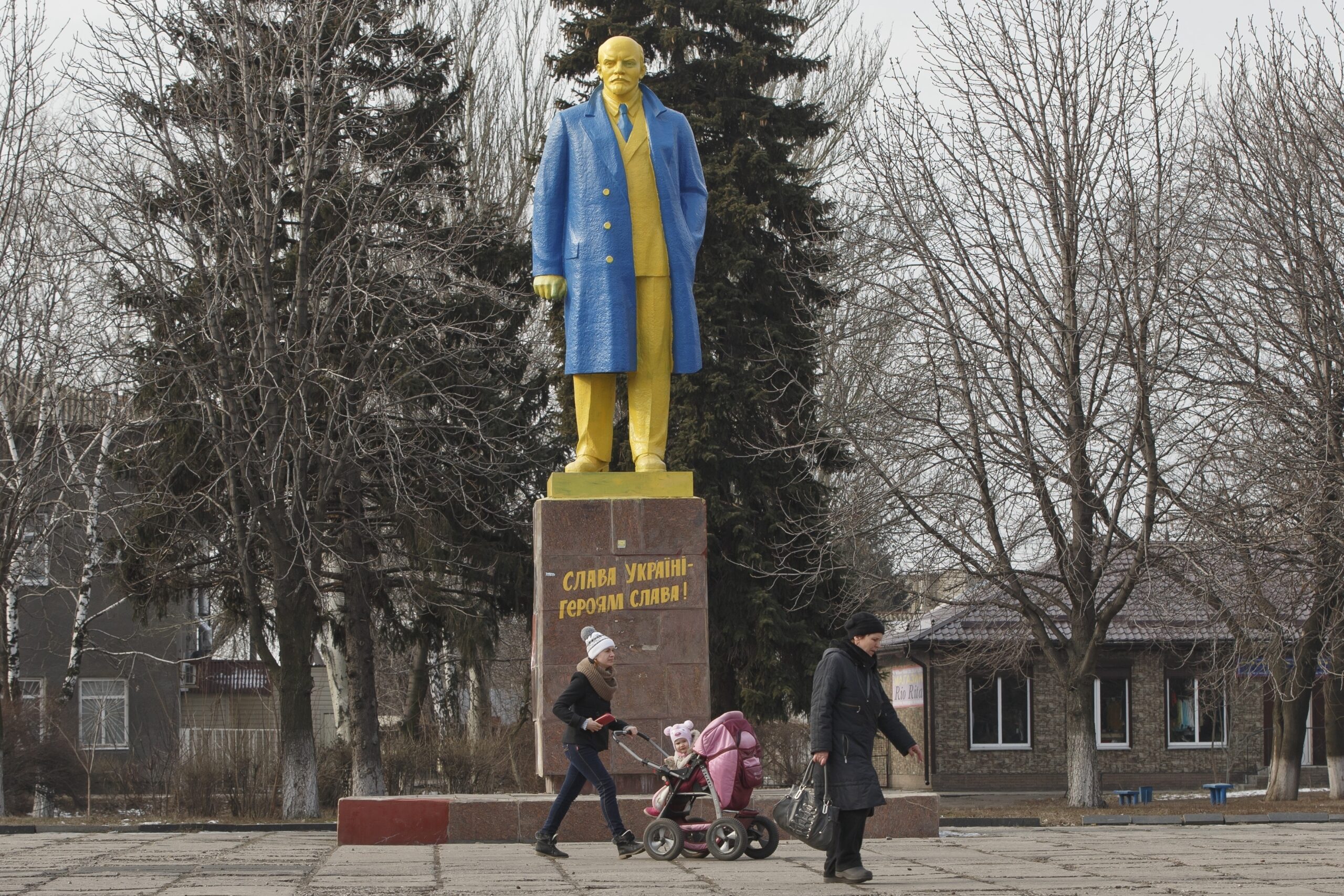NEW YORK (AP) – Not long after the 1924 death of the founder of the Soviet Union, a popular poet soothed and thrilled the grieving country with these words: “Lenin lived, Lenin lives, Lenin will live.”
A century later, the once-omnipresent image of Vladimir Lenin is largely an afterthought in modern Russia, despite those famous lines by revolutionary writer Vladimir Mayakovsky.
The Red Square mausoleum where his embalmed corpse lies in an open sarcophagus is no longer a near-mandatory pilgrimage but a site of macabre kitsch, open only 15 hours a week. It draws far fewer visitors than the Moscow Zoo.
The goateed face with its intense glare that once seemed unavoidable still stares out from statues, but many of those have been the targets of pranksters and vandals. The one at St Petersburg’s Finland Station commemorating his return from exile was hit by a bomb that left a huge hole in his posterior. Many streets and localities that bore his name have been rechristened.
The ideology that Lenin championed and spread over a vast territory is something of a sideshow in modern Russia. The Communist Party, although the largest opposition grouping in parliament, holds only 16 per cent of the seats, overwhelmed by President Vladimir Putin’s political power-base, United Russia.
Lenin “turned out to be completely superfluous and unnecessary in modern Russia,” historian Konstantin Morozov of the Russian Academy of Sciences told the AP.
Communist Party leader Gennady Zyuganov talks as if Lenin still was in charge: “100 years since the day when his big and kind heart stopped, the second century of Lenin’s immortality begins,” he said.

Putin himself appears inclined to keep Lenin at arm’s length, even aiming some darts at him.
In a speech three days before the 2022 invasion of Ukraine, Putin dismissed its sovereign status as an illegitimate holdover from Lenin’s era, when it was a separate republic within the Soviet Union.
“As a result of Bolshevik policy, Soviet Ukraine arose, which even today can with good reason be called ‘Vladimir Ilyich Lenin’s Ukraine.’ He is the author and the architect,” Putin said.
In a speech a year earlier, Putin said that allowing Ukraine and other republics the nominal right to secede had planted “the most dangerous time bomb.”
Whatever objections to those policies, Putin also is clearly aware of the emotional hold that Lenin retains for many Russians, and he does not support initiatives that arise periodically to remove the body from the mausoleum.
“I believe it should be left as it is, at least for as long as there are those, and there are quite a few people, who link their lives, their fates as well as certain achievements…of the Soviet era with that,” he said in 2019.
Such links may persist for decades. A 2022 opinion survey by state-run polling agency VTsIOM found that 29 per cent of Russians believed Lenin’s influence would fade so much that in 50 years he would be remembered only by historians. But that response was only 10 percentage points lower than one to the same question a decade earlier, suggesting Lenin remains important.

Lenin’s hold on Russia’s heart is still strong enough that three years ago, the Union of Russian Architects succumbed to a public outcry and cancelled a competition soliciting suggestions for how the Red Square mausoleum could be repurposed. That competition did not even specifically call for the removal of Lenin’s body.
Lenin died on January 21, 1924, at age 53, severely weakened by three strokes. His widow, Nadezhda Krupskaya, wanted him to be buried in a conventional grave.
Lenin’s close associates had feared his death for months. Artist Yuri Annenkov, summoned to do his portrait at the dacha where he was convalescing, said he had “the helpless, twisted, infantile smile of a man who had fallen into childhood.”
Amid those concerns, Josef Stalin told a Politburo meeting of a proposal by “some comrades” to preserve Lenin’s body for centuries, according to a history by Russian news agency Tass. The idea offended Leon Trotsky, Lenin’s closest lieutenant, who likened it to the holy relics displayed by the Russian Orthodox Church — a staunch opponent of the Bolsheviks— that had “nothing in common with the science of Marxism.”
But Stalin, once a divinity school student, understood the value of the secular analogue to a saint.
The weather may have tipped the scales. Temperatures were reportedly as low as minus 30 C when Lenin’s body was displayed during a wake in Moscow, stalling decomposition and inspiring authorities to hastily build a small wooden mausoleum in Red Square and make further efforts to preserve the body.
A later version, a more modernist take on ancient stepped pyramids clad in sombre deep red stone, opened in 1930. By that time, Trotsky had been forced into exile and Stalin was in full control, bolstered by a determination to portray himself as absolutely loyal to Lenin’s ideals.

In the end, the cult of “Lenin After Lenin” may have worked against the Soviet Union rather than strengthening it by enforcing a rigid mindset, in the view of some historians.
“In many ways the tragedy of the USSR lay in the fact that all subsequent generations of leaders tried to rely on certain ‘testaments of Lenin,'” Vladimir Rudakov, editor of the journal Istorik, wrote in this month’s issue.
The Mayakovsky poem that proclaimed Lenin’s immortality was “a parting word, or a spell, or a curse,” Rudakov said.
About 450,000 people file past Lenin’s corpse per year, according to Tass, about a third of the number of Moscow Zoo visitors and a sharp contrast from the Soviet era when seemingly endless lines shuffled across Red Square.
The honour guards whose goose-stepping rotations fascinated visitors were removed from outside the mausoleum three decades ago. At the annual military parade through Red Square, the structure is blocked from view by a tribune where dignitaries watch the festivities.
Lenin is still there — just harder to see. – JIM HEINTZ






